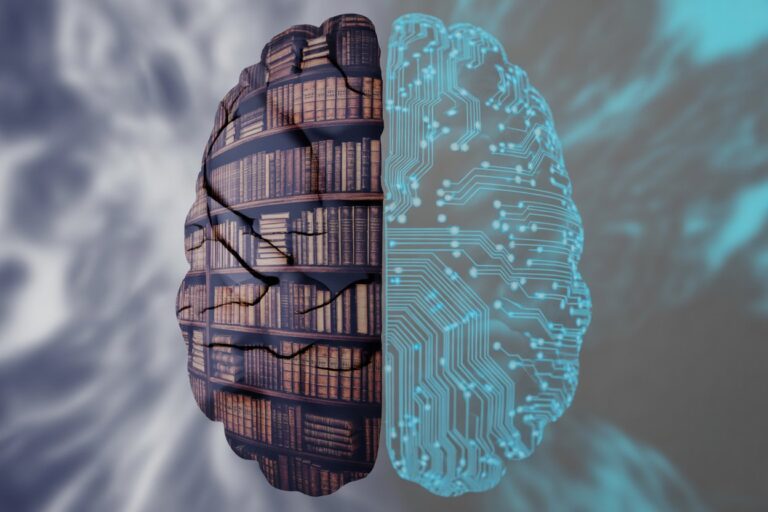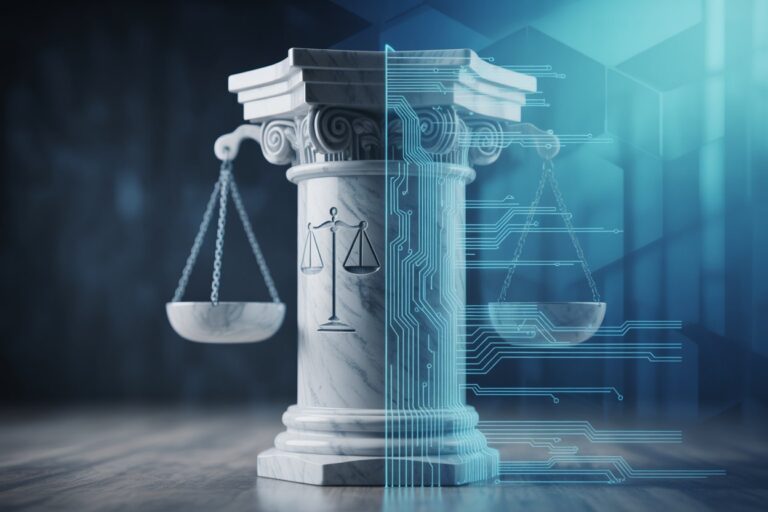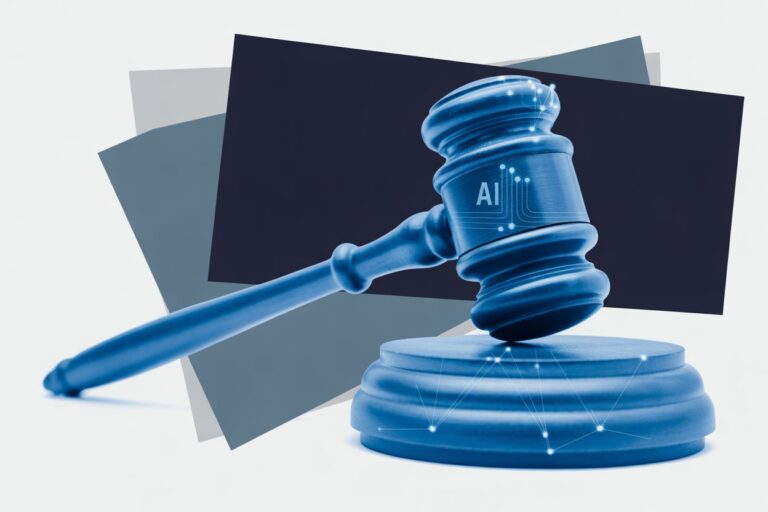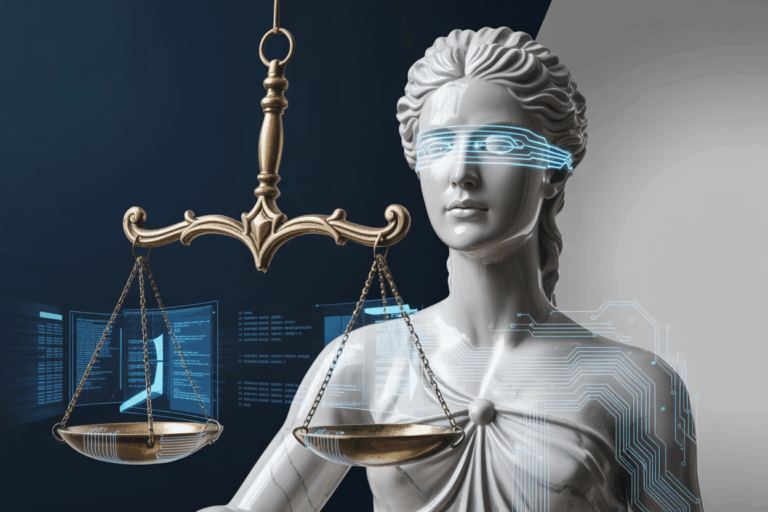Lost in the Cloud: The Long-Term Risks of Storing AI-Driven Court Records
As courts and law firms rush to digitize and automate, one question lingers in the server room: how do we preserve, or safely forget, the oceans of data that AI now generates and stores on behalf of the justice system?
Judicial Memory Meets Machine Storage
Across the United States and abroad, courts are deploying AI for transcription, document classification, sentencing analytics, and even evidentiary triage. These systems produce terabytes of output: transcripts, metadata, model weights, and audit logs, all of which must be stored somewhere. Yet the infrastructure for long-term preservation has not caught up with the pace of adoption.
File formats evolve, vendors sunset platforms, and court IT departments face mounting questions about integrity and readability. A transcript generated today may become a digital fossil within two decades, unreadable except by software that no longer exists. When a vendor changes file formats, deprecates legacy support, or goes out of business entirely, courts may have to manually verify thousands of pages against audio recordings, a process that can consume months of staff time and raise serious questions about the integrity of the official record.
The issue goes beyond mere obsolescence. AI-generated court records are often intertwined with model training data, feedback loops, and algorithmic logs never designed for archival storage. The line between an evidentiary record and a machine’s operational trace is blurring. Without standards for versioning and chain of custody, tomorrow’s appellate record may rest on data that is unverifiable, or worse, unavailable. The NIST AI Risk Management Framework acknowledges these risks but leaves long-term data preservation to institutional discretion—a gap with major consequences for courts and litigants.
How Courts Actually Store AI Records Today
Most federal courts rely on CM/ECF (Case Management/Electronic Case Files), a system first implemented in 1996 and rolled out nationally in the early 2000s. Each court runs its own decentralized server using Informix SQL databases, Perl and Java code, and Apache web servers, according to a system overview published by the Administrative Office of the U.S. Courts. All filings must be submitted in PDF format, with courts increasingly favoring PDF/A to satisfy National Archives digital-preservation guidance. The platform’s architecture, built decades before the emergence of AI, was never designed for machine-generated evidence or automated transcripts.
When an AI-generated transcript enters CM/ECF today, it is treated like any other PDF. There is no mandatory metadata indicating which AI model created it, what version was used, what training data informed it, or what accuracy threshold it met. The provenance is invisible. If a vendor updates its algorithm or shuts down, the court has no technical record of how that document came to exist. National Archives retention schedules note that certain CM/ECF data can be deleted after a set period, but they provide no protocol for preserving AI-derived materials. In effect, chain of custody—a bedrock evidentiary principle—dissolves in the cloud.
The storage vulnerabilities extend beyond the courthouse. AI transcription vendors such as Rev and Verbit store judicial data across commercial cloud services, redundancy backups, and, in some cases, training datasets intended to improve future models. Studies of storage reliability show that only about 80 percent of hard drives survive beyond four years, yet few courts maintain vendor-agnostic backups or audit long-term data integrity. Meanwhile, the 2025 Court Reporting Industry Trends report from the American Association of Electronic Reporters and Transcribers warns that the certified stenographer workforce is shrinking rapidly. In California alone, an ongoing shortage has already delayed appeals and forced courts to rely on digital reporting, according to CalMatters. The national deficit—estimated at roughly 20,000 open positions—continues to accelerate AI adoption even as fundamental preservation issues remain unresolved.
When Privilege Meets Persistence
AI doesn’t forget, and that’s the problem. Once privileged or sealed information enters an analytic or generative system, it may become embedded in layers of storage far beyond counsel’s control: in vendor clouds, redundant backups, or model logs. Traditional doctrines of privilege assume a closed loop between client and counsel. But what happens when that loop runs through a commercial AI vendor whose servers replicate data across continents, including jurisdictions with weaker data-protection rules?
Courts have yet to define whether long-term retention of such material constitutes a breach of privilege, a violation of privacy law, or an unavoidable feature of digital evidence management. The Council of Europe’s AI treaty initiative raises these concerns, emphasizing “control over personal and sensitive data” as a foundational principle.
In May 2025, the tension between AI storage and legal obligations became unavoidable. Magistrate Judge Ona T. Wang ordered OpenAI to preserve all ChatGPT output logs indefinitely, including conversations users had explicitly deleted, effectively overriding the company’s standard 30-day deletion policy and commitments under GDPR and the California Consumer Privacy Act. The ruling came in relation to copyright litigation brought by The New York Times and other media organizations, which asserted deleted chat logs might contain evidence of systematic infringement. OpenAI contended the order forced it to disregard privacy promises made to millions of users and to build parallel evidence-vault storage systems. The court held that litigation preservation obligations may override deletion commitments—at least temporarily.
The OpenAI case illustrates a broader dilemma. In the U.S., federal retention schedules rarely mention AI output or derivative data. The European Union’s General Data Protection Regulation (GDPR), by contrast, favors “data minimization,” requiring that sensitive information be purged when no longer necessary. Its “right to be forgotten” provision clashes with judicial record-keeping: how can a court honor a deletion request for personal data embedded in transcripts or algorithmic output possibly cited decades later?
Even when deletion is mandated, AI models may retain statistical traces of original content, raising philosophical and legal questions about whether true erasure is possible. Emerging scholarship shows generative models can “memorize” privileged text, leaving behind latent traces that survive deletion commands. The question is no longer whether privileged material can leak into AI systems, but whether it can ever truly leave.
Governance Without Guidelines
No unified framework governs how courts or law firms should store, audit, or retire AI-derived data. The National Institute of Standards and Technology provides metrics for trustworthiness and bias mitigation but stops short of prescribing archival obligations. The European Commission’s AI Act addresses data governance within a risk-based regime. The Pew Research Center provides context on how AI is perceived across sectors. The World Bank’s GovTech Maturity Index tracks digital-government readiness globally. Yet none offer specific guidance for judicial systems whose records must balance transparency, due process, and confidentiality over decades.
The challenge extends beyond the West. Courts in Singapore, Brazil, and India are rapidly adopting AI-enabled case management systems without parallel development of retrospective-retention or deletion policies. The result is a global judicial memory gap: courts may someday hold petabytes of unsearchable, unverifiable, and potentially privileged data distributed across incompatible systems.
Even if courts solve the storage problem, another question looms: can they trust what AI produces enough to admit it as evidence? The issue of model interpretability, meaning the ability to understand how an algorithm reached its conclusion, is emerging as a new standard for admissibility. Legal scholars and technologists argue that unless an AI system’s logic can be explained, cross-examined, and reproduced, it should not form part of the evidentiary record. The NIST AI Risk Management Framework and NIST SP 1270 both identify explainability as a pillar of trustworthy AI, while the Stanford Law Center for Legal Informatics (CodeX) and the IEEE Global Initiative on Ethics of Autonomous and Intelligent Systems emphasize transparency as essential to due process. Without it, a future court might be asked to uphold a conviction or dismiss a claim based on reasoning no human can fully verify.
What Courts and Firms Can Do Now
The integrity of the legal record depends not only on what AI can generate today, but on what we can still open, authenticate, and trust decades from now. Institutions cannot wait for a perfect standard. At minimum, courts and firms should adopt version-controlled archival formats, enforce vendor-agnostic backups, define retention schedules for AI materials, and regularly audit third-party data handling.
Future rulemaking could require AI systems used in court to produce exportable audit logs readable by future systems, preserving transparency and enabling appellate review. Legal tech contracts should mandate long-term accessibility, data sovereignty, and processes for secure deletion or handoff when vendor relationships end. Courts should require that AI-generated documents submitted into CM/ECF include standardized metadata: model used, version, generation date, and certified accuracy thresholds met.
The question is no longer whether AI will reshape the legal record, but whether that record will remain accessible, verifiable, and trustworthy for generations to come. Without timely action, we risk building a justice system whose memory is stored in formats we cannot read, on servers we do not control, under laws that do not yet exist.
My Take
AI is forcing the justice system to confront something it has never faced before: its own memory. Courts were built on the assumption that records are static, with transcripts, filings, and judgments that live in paper form, retrievable and readable decades later. Now the legal record itself is dynamic, generated and stored by systems that evolve faster than the case law interpreting them.
I’m pro AI. It’s unstoppable, and resistance is futile because courts, bar associations, and firms are already using it. But adoption without archival foresight is reckless. The problem isn’t that AI will replace judges or lawyers; it’s that we might lose the evidentiary trail of what it actually did. If an AI-generated transcript can’t be authenticated in 20 years, then due process itself is compromised.
The balance lies in treating AI output as a new evidentiary species, one that needs its own rules for metadata, version control, and long-term preservation. The same energy being poured into model governance and bias audits should be directed toward data durability. We need digital equivalents of the court reporter’s oath, standards that preserve the integrity of records long after the vendor or model is gone.
AI isn’t eroding the justice system’s memory; we are, by failing to plan for its longevity. The technology is fine. It’s the institutional amnesia that should worry us.
Sources
AAERT – 2025 Court Reporting Industry Trends | CalMatters – California Court Reporter Shortage | CM/ECF System Overview (Wikipedia) | Council of Europe – AI Treaty Initiatives | European Commission – AI Act | GDPR (Regulation 2016/679) | NARA Bulletin 2023-02 (PDF/A Guidance) | NARA CM/ECF Retention Schedule | NIST AI RMF (GAI Profile) | NIST SP 1270 (Bias) | Pew Research – Public & Expert Views of AI | Rev – Court Reporter Shortage | U.S. Courts – CM/ECF FAQ | Verbit – Legal Industry Overview | World Bank – GovTech Maturity Index
Disclosure: This article was prepared for educational and informational purposes only. It does not constitute legal advice and should not be relied upon as such. All sources cited are publicly accessible. Readers should consult legal or compliance counsel for guidance tailored to their circumstances.







